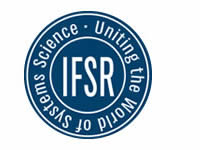IFSR Newsletter 1998 Vol. 17 No. 1 March
Gerald Kotzian
In the IFSR-Newsletters No. 40 (March 1996) and No. 44 (April 1997) two stories appeared about aura: “Aura and the Wasa Story” by Charles Francois and “Aura and the Corpus Juris” by Ernesto Grün. In these articles aura was seen as the something that is left over after a system has disappeared or stopped existing. But aura can also be the totality of all influences and effects around a person. Occultism and anthroposophy see aura as a radiation phenomenon surrounding the human body [1].
Similarly to this assumption aura is used in computer supported cooperative work (CSCW), mainly in systems based on a spatial model of information space, e.g. collaborative virtual environments (CVEs): Aura is the domain of an object or a user. It is the area in which perceptions can be made and actions can be performed.
To understand why this is important, you have to know group awareness. Group awareness is an emerging field in CSCW found important by more and more people working in this area. But what is group awareness?
Psychology defines awareness via a model of memory and recall. It is assumed that there is a memory buffer (the so-called working memory) that deals with all moment-by-moment matters, including both short- and long-term memory information. Hence awareness is identified with whatever knowledge happens to reside in the working memory at any given time [2].
Group awareness is synonymous to this psychological definition of awareness: it is everything a user can perceive and use in a collaborative system, without contacting other users or leaving the system. Group Awareness information includes knowledge about other users’ locations, states, actions and abilities as well as system-state, orientation aids and information about one’s possible actions. Of course it is impossible to supply a user with all that information in a big system with a huge number of users. That is the point where aura becomes an interesting model.
By an increasing number of objects in a system the computational overhead of transmitting all changes of one object to all other objects becomes impossible. An aura is a sub-space around an object which effectively bounds its presence in space and limits this problem [3]. As objects move across space, they carry their auras with them. Only when auras of two objects collide, the objects establish the chance to interact with each other. For this reason aura provides a very easy and powerful method of information filtering.
To enable auras that are not limited to very small areas, the basic concept has to be extended by two more terms: focus and nimbus. The focus is the subspace of aura within which an object is directing its attention [3]. It is a user’s “field of vision” and filters the information within the aura. The more an object is within your focus, the more aware you are of it [3]. The counterpart of the focus is the nimbus. It is the projection of an object’s presence or activity and responsible for the amount of awareness about it.
These three terms exactly determine group awareness between two objects. Focus and nimbus ascertain the degree of group awareness between two objects if the potential for it is established by intersecting auras.
The basic model can be further extended: by adapters, boundaries, etc. or can even be used in sets of objects. The example shows how comprehensive computer science and especially CSCW is. Even terms from occultism like aura are used to define certain contexts.
[1] Bertelsmann Universallexikon, Band 12, Bertelsmann Lexikothek Verlag, Gütersloh 1993
[2] Watts, L.: Concepts of awareness in human activity, Position paper for CHI’97 (Mar. 22-27, Atlanta, GA), 1997
[3] Benford, S., Mariani, J.: COMIC Deliverable D4.1 “Requirements and metaphors of shared interaction”, Lancaster University, 1993
Gerald Kotzian,
Sauerbruchstr. 34, 4600 Wels, Austria
